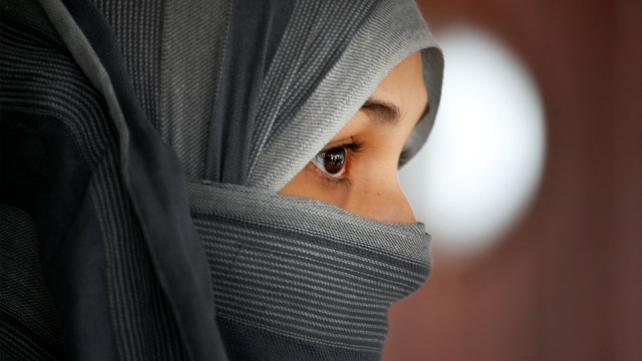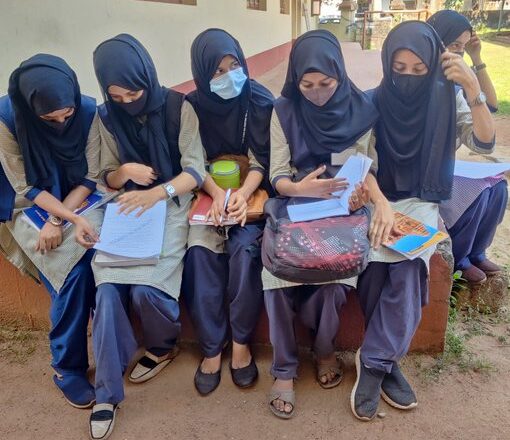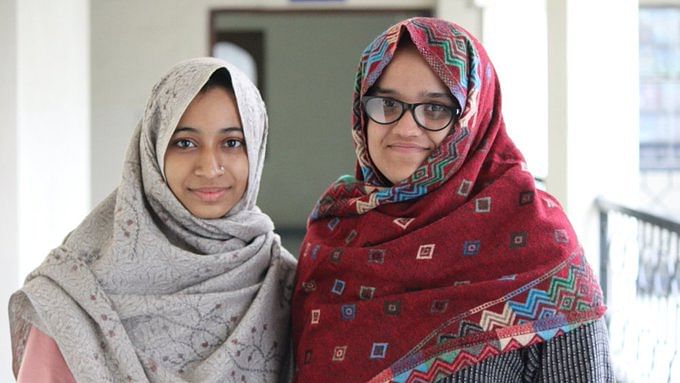
Why do Muslim women wear hijab: Do you have an item of clothes that you absolutely love? Clothing choices are a big component of how most individuals express themselves in public. Some individuals wear t-shirts with the logos of their favorite bands on them. Others wear caps or coats with personal significance.
Clothing choices frequently reflect people’s cultural backgrounds. You could wear a sari if you reside in India or Sri Lanka. A kimono is a traditional Japanese garment used for special occasions. Crosses are frequently worn as jewelry by Christians. In the synagogue, if you’re Jewish and a guy, you’ll most likely wear a kippah. Today’s Wonder of the Day is the hijab, which is a religious head covering. Let’s see why these questions arise? What is the controversy going on? and finally why do Muslim women wear hijab in detail.
Six Students in Udupi were barred from attending college because they wore a hijab – The controversy

Female students at the Government Women’s PU college in Udupi, Karnataka, have still been barred from entering classrooms for “wearing a hijab” after three weeks.
Since December 31, 2021, the college has categorized the six pupils as “absent.” Their parents sought the institution to discuss the situation, but principal Rudra Gowda refused to talk about it, according to The Hindustan Gazette.
The CFI and the Girls Islamic Organisation (GIO) had addressed the college administration and the district police to resolve the issue, but the students were still denied access to the classes.
The students were threatened and compelled to submit a document stating that they had not attended lessons for the previous 15 days, according to CFI state committee member Masood.
“The principal, together with lecturers, told the girls that if they didn’t write the letter, ‘we know how to make you write,'” he added, adding that one of the students had been ill as a result of the mental suffering.

According to Yashpal Suvarna, vice president of the Campus Development Committee, there were more than 150 women from minority ethnicities studying at the college. “They haven’t made any requests,” he remarked.
“These Campus Front of India (CFI) members are looking for a fight. The college has its own set of policies, processes, and rules. Because there are many underprivileged women studying at the college, the uniform was developed to provide an equal approach to education,” he noted.
He predicted that if their demand for namaz in college is satisfied today, they will make another demand for namaz on campus.
Nasir Pasha, the PFI’s state general secretary, told the newspaper that the event had taken away the religious freedom guaranteed by our Constitution. “Muslim students should be permitted to wear a scarf over their heads, just like Hindu students wear a bindi and Christian nuns wear a headpiece,” he stated.
According to The Hindu, Udupi MLA and head of the Institution Development Committee K. Raghupati Bhat addressed a gathering of over 1,000 parents on January 1 and stated that the college will maintain its uniform code, which includes the wearing of a veil, as established by the committee. Maruthi, the deputy director of the pre-university department, was also present during the meeting.
One of the six kids’ parents informed the newspaper that he cannot compromise on their practices and that his daughter will be admitted to another college.
The pupils also complained to the newspaper that the college forbade them from conversing in Beary or Urdu. The college administration, on the other hand, rejected these charges.
This debate over Muslim hijab students has now become a worldwide sensation, with the hashtag #HijabisOurRight trending at number one on Twitter India.
Alright let’s see the actual question here Why do Muslim Women Wear a Hijab?
What exactly is a hijab?
Many Muslim women wear it as a form of modesty. It’s usually a scarf or shawl. It generally covers the hair, neck, and shoulders of a lady. Many Muslim women hold the hijab in high regard. It symbolizes decency, seclusion, and morals.
Do all Muslim women wear a hijab?
No. However, in other locations, like Iran and Indonesia’s Aceh Province, the hijab is mandatory by law. In most regions, however, it is a matter of personal preference, and women choose whether or not to wear a hijab. Most Muslim women decide whether or not to wear a hijab when they are in their adolescent years.
When did it become fashionable to wear a hijab?
It may be traced all the way back to Muhammad, the most prominent prophet of Islam. To distinguish them different from others, Muhammad instructed his wives to wear hijabs. It was supposed to emphasize their unique position.
Reasons Why Muslim Women Wear a Hijab

Hijab is worn by Muslim women for a variety of reasons.
- It is seen by some as a rite of passage into adulthood.
- Others wear the hijab to exhibit cultural pride and to identify themselves as Muslims.
- Many people cover their heads to honor family traditions or local customs.
- Many Muslim women, of course, prefer not to wear the hijab. Others choose to wear it solely on holy occasions.
- For many other women, the headscarf has become a symbol of defiance against increasingly exposed norms of feminine beauty. This viewpoint contends that eliminating clothing for the sake of the male gaze does not equate to emancipation.
- Hijabi women claim that employers must deal with them based on their qualifications rather than their attractiveness and that the hijab thereby levels the playing field. Women in Western nations, on the other hand, discover that wearing a head covering makes it more difficult to get work.
- Finally, for some women, wearing a headscarf is a practical choice. It can decrease harassment on the street and at work by reducing remarks from others about women being out in public.
People outside of Islam frequently misunderstand the hijab. Some believe Muslim women are compelled to wear it. Others are perplexed by the hijab’s purpose and have demanded that it be outlawed. Acceptance and knowledge of the hijab and Islam are growing as more people learn about them.
Many public figures nowadays wear a hijab. Malala Yousafzai, the 2014 Nobel Peace Prize recipient, is one such case. Hijabs are also worn by baker Nadiya Hussain and model Halima Aden in the entertainment industry. Where else have you seen hijabs worn by women? What further instances of cultural attire do you have in mind? Let me know what you think in the comment section.
You might like this one – 20 Reasons why Andrew Garfield is the best Spider-Man of all time
Get the latest Kollywood news on Medico topics and its Twitter handle
I’m Nawin (Admin), a seasoned doctor and accomplished content writer with 8 years of experience. Join me as I unravel the latest breaking news, unveil behind-the-scenes happenings, and explore the aftermath scenes. With my expertise, I’ve crafted this renowned news site to provide you with an authentic perspective on daily happenings. Get ready to delve into a world of truth and knowledge on Medico Topics.
Coverage: Blogs, Health, Exams, Obituary, Crime
